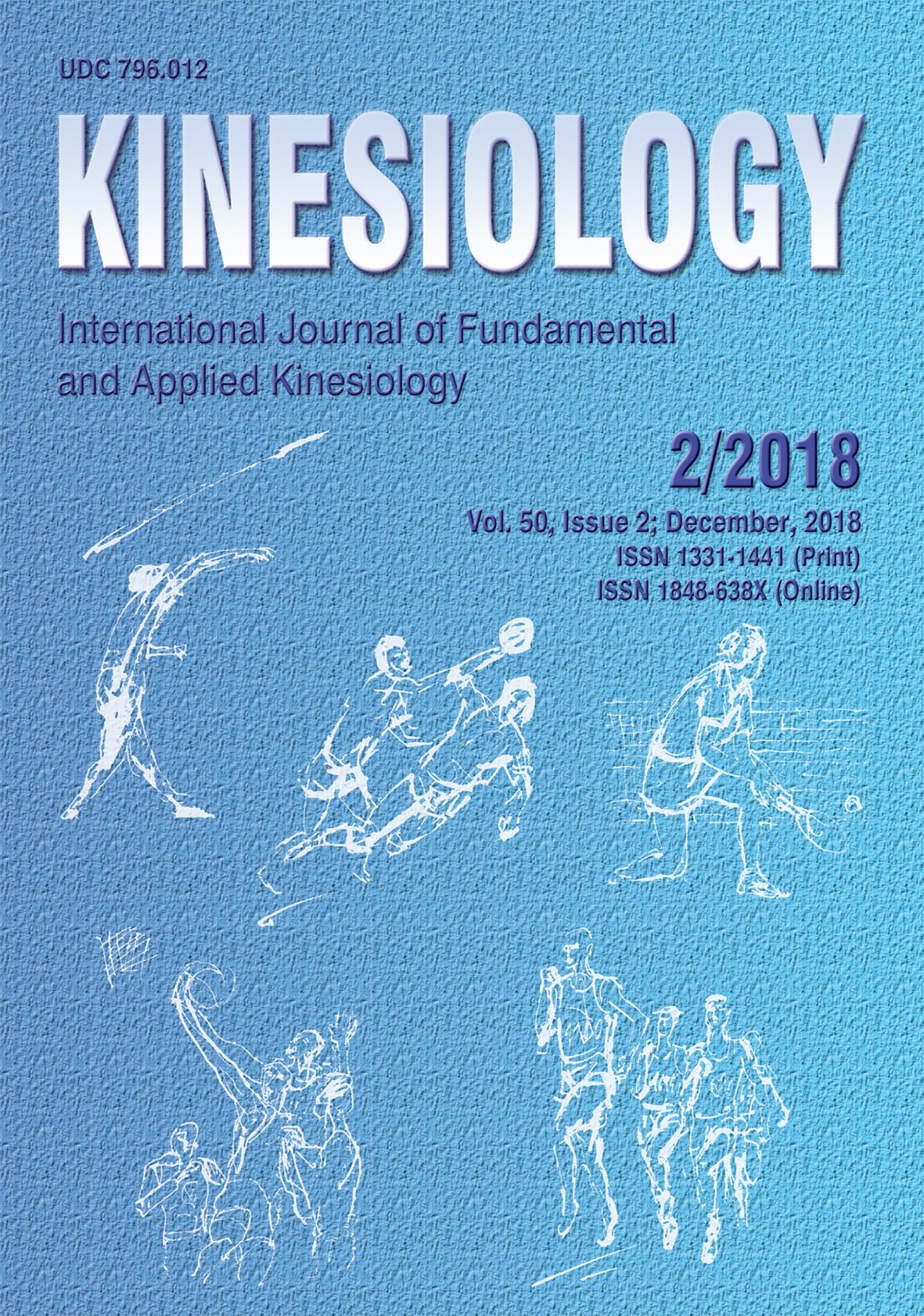Position-related differences in morphological characteristics of U14 female handball players
Abstract
The aim was to establish differences in morphological characteristics of 48 selected female younger cadet (U14) handball players (age 13.88±0.46 years) in the playing positions of wings, backs and pivots. The sample of variables embraced 24 morphological measures defining the already established four latent body dimensions. Univariate ANOVA revealed the significant global differences among the three groups of U14 players in 11 morphological measures. Between the backs and pivots no significant differences were established. The greatest differences between the pivots and wings were established in body height, leg length, arm length, ankle breadth, body weight and calf circumference (p<.01). The greatest differences between the wings and backs were established in four variables: body height, arm length, knee breadth and ankle breadth (p<.01). We endorse the interpretation that specificities of technical-tactical activities executed by backs and pivots in attack repose in the background of the established differences, that is, backs and pivots are exposed to more body contacts in attack in which they must overcome defenders’ resistance. In the sample of the Croatian U14 female handballers apparently no somatotypic component prevailed. However, a slightly larger contribution of endomorph component was perceived in the pivots’ body composition, which was in line with the general results of the entire age group. In U14 backs both the endomorph and mesomorph component were pronounced equally, whereas all the three components were of even values in the wings.
Downloads
Published
How to Cite
Issue
Section
License
Copyright (c) 2018 Kinesiology

This work is licensed under a Creative Commons Attribution-NonCommercial 4.0 International License.
At Faculty of Kinesiology we recognize that access to quality research is vital to the scientific community and beyond. Kinesiology is non-profit journal and all costs of publishing and peer review process are covered by the publisher itself or other funding sources like Ministry of Science and Education of the Republic of Croatia. Full text papers are also available free of charge at http://hrcak.srce.hr/kineziologija. There are no restrictions on self archiving of any form of paper (preprint, postprint and publisher's version).
Articles are distributed under the terms of the CC BY - NC 4.0
Kinesiology does not charge any fees to authors to submit or publish articles in our journal.


